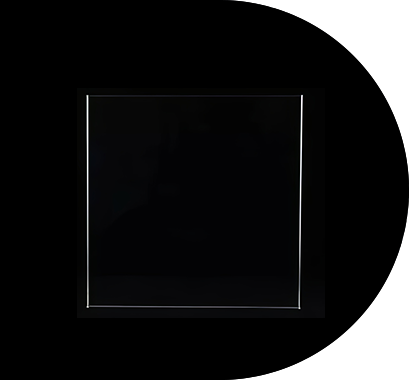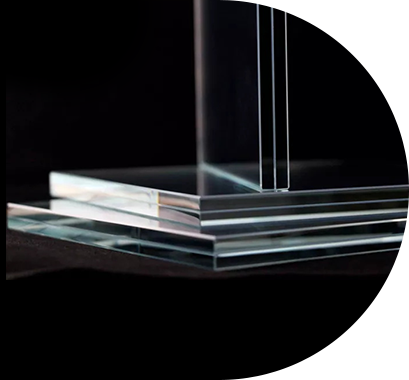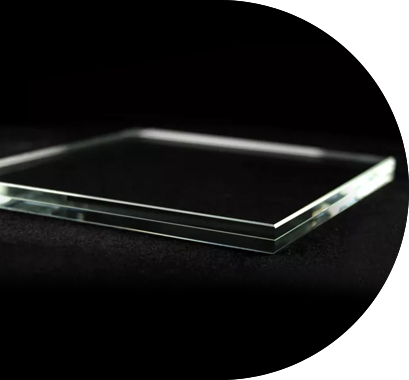Anti-bending glass is a specialized type of glass designed to resist deformation, bending, and flexing under applied loads. Unlike conventional glass, which can be fragile and prone to cracking under stress, anti-bending glass combines advanced material properties and manufacturing techniques to achieve enhanced mechanical strength. Its durability, safety, and resistance to flexural forces make it an ideal solution for applications where both structural integrity and aesthetic appeal are critical.
1. Understanding Anti-Bending Glass
Anti-bending glass is engineered to withstand bending forces without breaking or losing its structural form. This property is achieved through a combination of high-quality raw materials, controlled processing, and sometimes the incorporation of specialized interlayers. Key characteristics of anti-bending glass include:
- High Flexural Strength: It can endure significant bending forces without cracking.
- Durability: Resistant to impact, pressure, and mechanical stress.
- Safety: In cases of extreme stress, some variants are designed to shatter safely or retain fragments within protective interlayers.
- Clarity and Finish: Maintains transparency and smooth surfaces despite enhanced structural properties.
Because of these qualities, anti-bending glass is widely used in modern architecture, transportation, electronics, and specialty industrial applications where conventional glass would be insufficient.
2. Manufacturing Process of Anti-Bending Glass
The production of anti-bending glass involves multiple stages to ensure both strength and consistency. While specific techniques vary by manufacturer, the general process includes the following steps:
a. Material Selection
High-quality silica sand, soda ash, and limestone are combined with trace additives to produce a glass composition optimized for strength and flexibility. For some applications, chemical modifiers are added to enhance elasticity or resistance to bending.
b. Melting and Forming
The raw materials are melted in a furnace at high temperatures to form a uniform molten glass. The molten glass is then formed into sheets using processes such as:
- Float Glass Process: The glass is floated on molten tin to achieve uniform thickness and flatness.
- Casting or Rolling: For thicker or specialty sheets where controlled texture or dimensions are required.
c. Tempering or Heat Treatment
Tempering involves heating the glass to a high temperature and then rapidly cooling it. This process introduces compressive stresses on the surface and tensile stresses in the interior, giving the glass enhanced resistance to bending and impact. Tempered anti-bending glass is significantly stronger than standard annealed glass.

d. Lamination (Optional for Extra Strength)
For additional anti-bending properties, layers of glass may be bonded together with polymer interlayers such as PVB or EVA. This laminated structure distributes stress across multiple layers, reduces the risk of breakage, and allows the glass to retain its shape even under extreme loads.
e. Chemical Strengthening (Optional)
Some advanced anti-bending glasses undergo chemical strengthening, where ions in the surface layer are exchanged with larger ions through a chemical bath. This process creates compressive stress on the surface, further improving flexural strength.
f. Cutting, Polishing, and Quality Inspection
The final glass sheets are cut to size, edges are polished, and the sheets are inspected for defects. Mechanical and optical tests ensure that the glass meets strict bending resistance and clarity standards.
3. Applications of Anti-Bending Glass
Anti-bending glass is highly versatile due to its strength and durability. Common applications include:
- Architectural Projects: Glass floors, facades, and balustrades that require both transparency and structural integrity.
- Automotive and Transportation: Windscreens, panoramic roofs, and safety windows in vehicles.
- Electronics: Protective screens for devices such as smartphones, tablets, and industrial displays.
- Industrial Equipment: Machinery guards, laboratory panels, and control room windows exposed to mechanical stress.
By combining strength, safety, and aesthetic quality, anti-bending glass offers solutions in areas where conventional glass would fail.
Conclusion
Anti-bending glass is a highly engineered material designed to resist bending, maintain structural stability, and provide safety under load. Its production involves careful selection of raw materials, precise forming, tempering, lamination, and sometimes chemical strengthening. These processes give the glass superior flexural strength, durability, and reliability, making it indispensable in modern architecture, transportation, electronics, and industrial applications.
The combination of mechanical performance and optical clarity ensures that anti-bending glass is not only functional but also visually appealing, meeting the demanding requirements of contemporary design and engineering.






